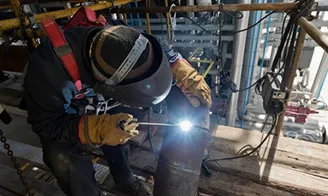mig flux core welding wire factories
Understanding MIG Flux Core Welding Wire Factories
MIG (Metal Inert Gas) welding, also known as Gas Metal Arc Welding (GMAW), is a popular welding process that utilizes a continuous wire feed as an electrode. One of the variations of this method is Flux Core Arc Welding (FCAW), which employs a tubular wire filled with flux. This process is widely used in various industries due to its versatility, efficiency, and capability to produce strong welds in a range of materials. In this article, we will explore the production of MIG flux core welding wires and the factories involved in this vital manufacturing process.
The Role of Factories in Manufacturing MIG Flux Core Welding Wire
Factories that specialize in manufacturing MIG flux core welding wires play a crucial role in the welding industry. These facilities are designed to produce specialty wires that meet specific standards required for high-quality welding applications. The production of flux core welding wire involves several steps and advanced technologies to ensure the final product meets industry requirements.
1. Raw Material Sourcing The production of welding wire begins with the sourcing of high-quality raw materials. Steel is the primary component, available in various grades, depending on the desired mechanical properties of the final product. Additionally, flux materials are selected based on their chemical properties, which help protect the weld pool and control the slag formation.
2. Wire Drawing Once the raw materials are secured, the production process continues with wire drawing. In this step, metal rods are drawn through progressively smaller dies to achieve the desired diameter. This process is essential for producing the continuous wire feed used in MIG welding. The diameter of the wire is critical, as it directly influences welding speed, penetration, and the overall quality of the weld.
3. Filling the Tubes In flux-cored welding wire production, the wire must be tubular. This means it is not just a solid wire but a hollow one that can be filled with flux materials. The filling process is crucial, as the flux needs to be evenly distributed within the tubular wire to ensure consistent performance during welding. Factories utilize specialized equipment to accurately fill the wire, taking care to avoid any contamination.
mig flux core welding wire factories

4. Seaming and Welding After filling, the edges of the tubular wire are seamed and welded together. This step is critical for maintaining the integrity of the wire, allowing it to withstand the high temperatures and pressures encountered during the welding process. Advanced welding technologies are used to ensure consistent seams that minimize the risk of defects.
5. Coiling and Spooling Once the flux core wire is manufactured, it is carefully coiled and spooled for transport and storage. Proper handling at this stage is essential to prevent any damage to the wire, which could affect its performance during welding. Factories often have automated systems to ensure that coiling is done efficiently and accurately.
6. Quality Control Quality control is a paramount consideration in manufacturing MIG flux core welding wires. Factories implement rigorous testing procedures to ensure that every roll of wire complies with industry standards and customer specifications. This may include tensile strength tests, chemical composition analysis, and performance assessments. The aim is to provide a reliable product that meets the demanding requirements of various welding applications.
7. Packaging and Distribution After passing quality control, the finished products are packaged for distribution. Packaging is designed to protect the wire from environmental factors that could affect its quality, such as moisture and dirt. Factories often collaborate with logistics partners to distribute their products efficiently, ensuring that they reach customers in a timely manner.
Conclusion
In conclusion, MIG flux core welding wire factories play a critical role in the welding industry, contributing to the production of high-quality welding consumables. By sourcing quality materials, employing advanced manufacturing processes, and adhering to rigorous quality control measures, these factories ensure that welders have access to reliable and efficient products. As industries continue to evolve, the importance of such manufacturing facilities will only grow, underpinning innovations in welding technology and practices. With ongoing advancements, the future of MIG flux core welding wire manufacturing looks promising, essential for supporting the demands of modern fabrication and construction sectors.
-
AWS E6013 Welding Electrodes: All-Position & Smooth Arc RodsNewsAug.25,2025
-
E312 Electrode: High Strength Welding Rod for Dissimilar MetalsNewsAug.24,2025
-
J506 Welding Rod: High-Strength, Crack-Resistant ElectrodeNewsAug.23,2025
-
E71T-1 Shielding Gas for Superior Welding Quality & EfficiencyNewsAug.22,2025
-
E316L Welding Rod: Premium 316L Stainless Steel WeldsNewsAug.11,2025
-
Premium SG2 Welding Wire | High-Quality MIG/MAG for SteelNewsAug.10,2025


